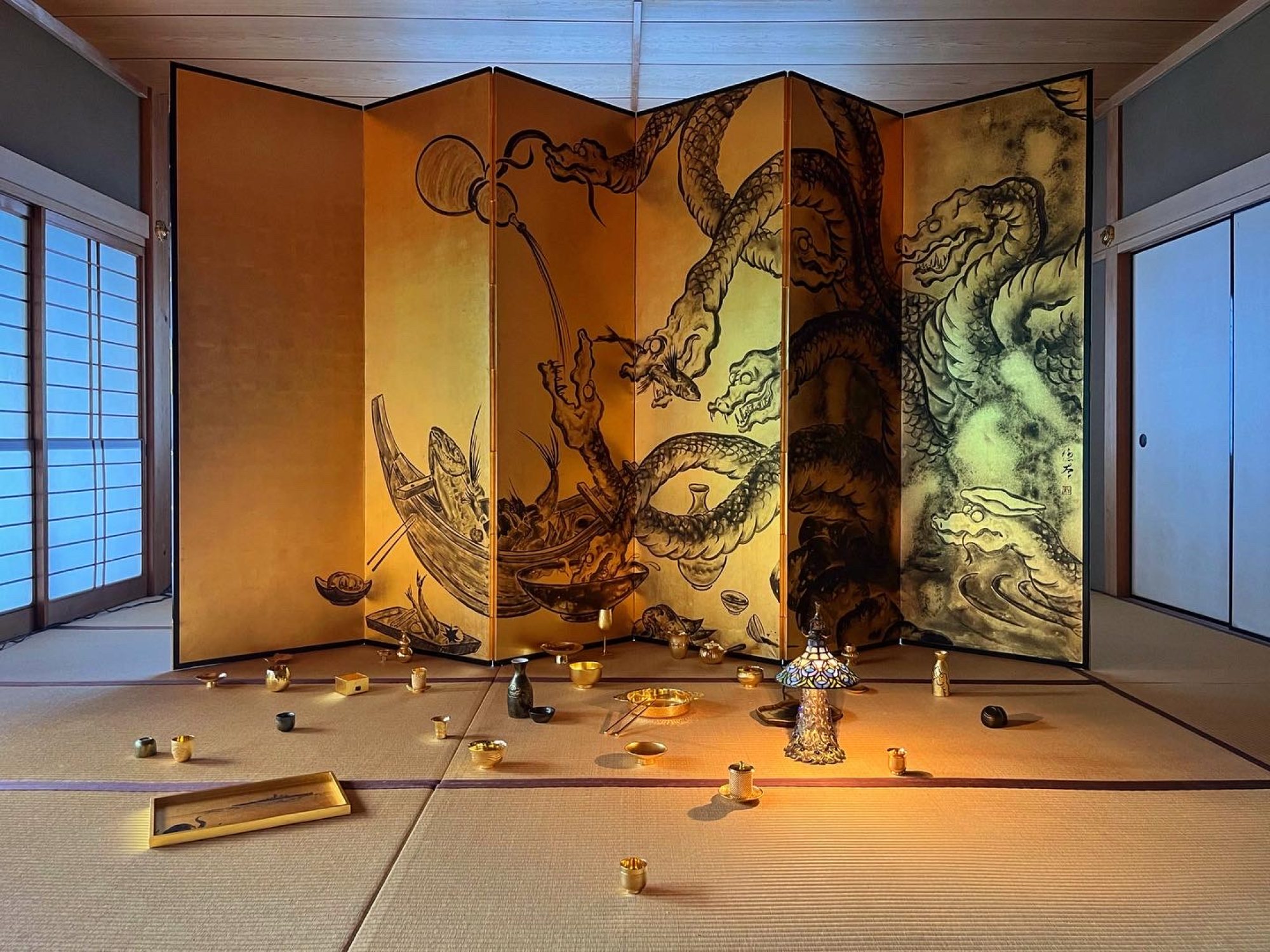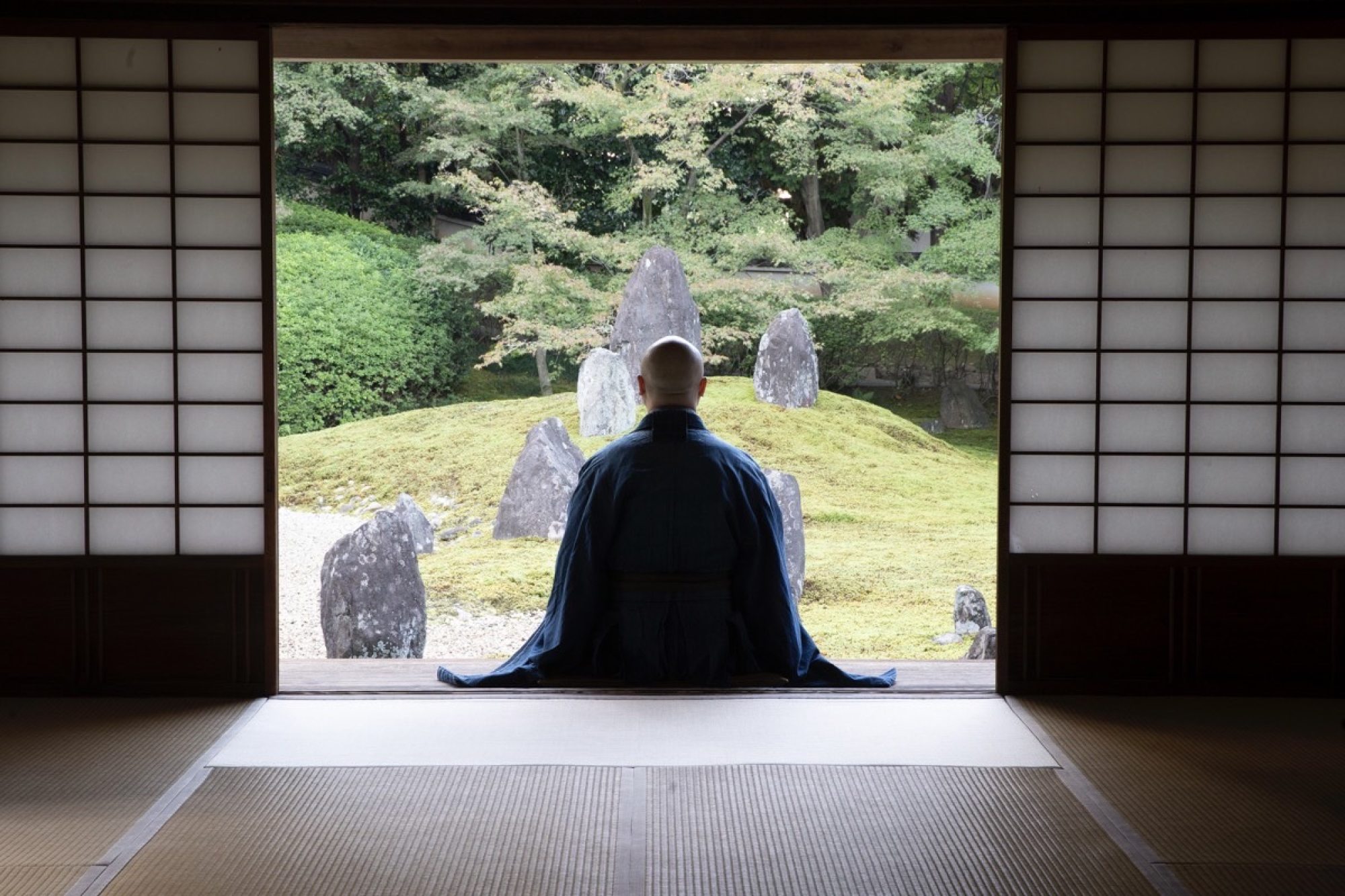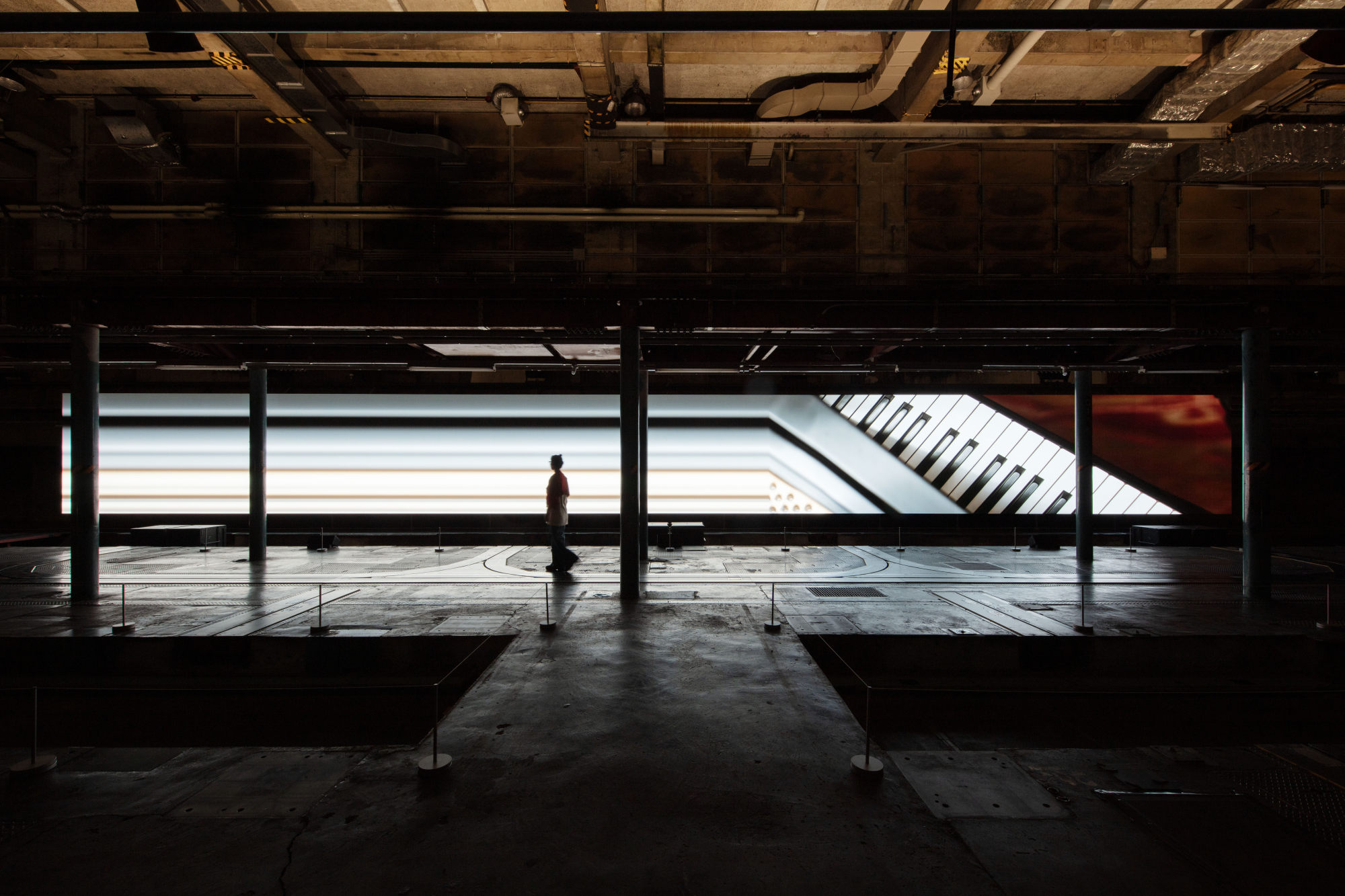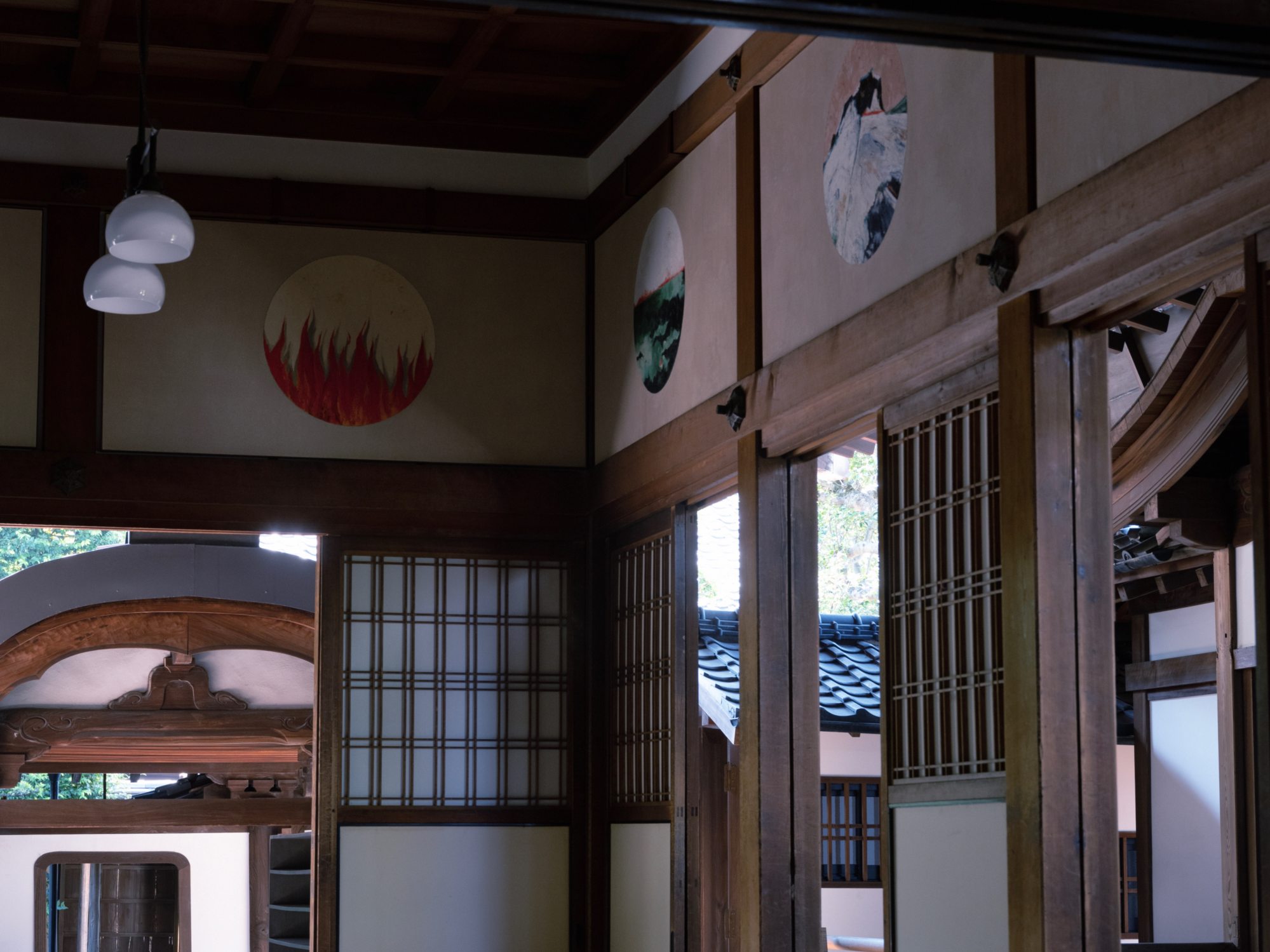“I have visited so many fairs and I realised that you are going to see art but you are also travelling to a city for a new experience,” said Yamashita, dressed in her grandmother’s pink kimono.

Although Kyoto is better known for its ancient shrines and gardens, the government-backed ACK, now in its third year, has helped promote the city as a hotbed of contemporary art.
This year’s small fair had as its theme “Visions of a Torn World: Circulation and Coexistence”, and a unique host-guest system in which Japanese galleries invited one or two foreign galleries to create joint exhibitions in shared booths.
Sixty-four galleries from 16 countries took part. More than half were first-time exhibitors, such as French gallery Almine Rech and New York- and Los Angeles-based Karma.
The environment in Kyoto is conducive to a slower experience of time where you can view art in dignified conditions
“The scale implies intimacy. It doesn’t really feel like a trade fair because of the fundamental nature of people working together,” said Jeffrey Rosen, co-founder of Tokyo-based gallery Misako & Rosen, who partnered with New York’s 47 Canal gallery to show landscape paintings by New York-based artist Trevor Shimizu.
Unlike typical fairs which are grids packed with rows of booths, ACK’s unconventional layout evoked the city’s network of alleyways. The booths also had a raw aesthetic, with exterior walls made of wood suggestive of shipping crates.
‘I’m trying to create a raw luxury’: designer on his ‘sumptuous minimalism’
‘I’m trying to create a raw luxury’: designer on his ‘sumptuous minimalism’
Booth costs were relatively low because of government backing and sponsorship from the private sector, allowing dealers to take a chance with their presentations. The fair was also granted bonded status, which meant that international exhibitors were exempt from a 10 per cent sales tax unless a work was sold and then shipped elsewhere within Japan.
Prices of artworks ranged from an affordable US$150 ceramic work by emerging Japanese artist Taiki Yokote shown by Tokyo gallery Con_, to a US$93,500 painting by American artist Sam Falls at Galerie Eva Presenhuber, and a US$200,000 painting by Brazilian modernist Amadeo Luciano Lorenzato at Mendes Wood DM.
‘Respect in a different kind of way’: mother’s ashes mixed in ink for tattoo
‘Respect in a different kind of way’: mother’s ashes mixed in ink for tattoo
The Kyoto Meetings section of the fair, devoted to artists with connections to the city, was particularly well curated and featured international artists such as Olafur Eliasson, who was inspired by Kyoto’s Zen gardens, as well as local artists such as the environmentally concerned ceramicist Kimiyo Mishima, shown by Sokyo Gallery.
As part of Sokyo’s booth presentation, the gallery displayed the Osaka-based artist’s sculptures on tatami mats and pulled out floor cushions for fairgoers to enjoy a slow tea ceremony with matcha tea and sweets – a rare respite in a bustling art fair.
“We have become too accustomed to viewing contemporary art in transactional formats and sometimes forgotten how to immerse ourselves in experiences and rituals”, said Paris-based curator and art adviser Claudia Paetzold.

“The environment in Kyoto is conducive to a slower experience of time where you can view art in dignified conditions. There’s a sense of respect and care.”
Greg Dvorak, curator of ACK’s public programme, said its large-scale installations served to interrupt “the fair’s chain of commerce” and to invite viewers to linger.
Australian-Japanese artist duo Ken and Julia Yonetani’s Guerrilla Farmers Market, for instance, was a market stall where you could chat with the artists and buy organic black edamame, rice and adzuki beans, which they grew on their Kyoto farm. The work commented on the devaluation of farming and labour.
Traditional Japanese culture and 1970s hedonism collide in Kyoto Stories
Traditional Japanese culture and 1970s hedonism collide in Kyoto Stories
Outside ACK, Tokyo-based artist-run space XYZ Collective organised “Artist Running Festival”, an experimental group exhibition taking place in a gritty three-storey gallery called Vou from October 27 to November 12 that unites fellow artist-run spaces such as Fig and Lavender Opener Chair.
The works there ranged from collages on sandpaper to playful assemblages made of musical instruments.
Perhaps the most striking feature of this art-filled period in Kyoto is the display of contemporary art in historic homes and temples across the city.

Osaka-based Artcourt Gallery, for example, invited audiences to its viewing room ACG Villa Kyoto in a Japanese machiya (a traditional wooden town house) built in 1934.
“You walk barefoot on the tatami and have a closer relationship with the art. It’s completely different to a white cube,” said gallery founder Mitsue Yagi of the intricate indigo tapestries by Kyoto artist Shihoko Fukumoto on show. “In a typical gallery you are restricted, but here you can move freely.”
During the fair, Japanese billionaire art collector Yusaku Maezawa’s Contemporary Art Foundation hosted an exhibition for Belgian artist Harold Ancart, who was eager to exhibit at the Ryosokuin Temple.

Inspired by the shape of a circular window in the temple, he created a series of tondo-shaped landscape paintings which acted like additional windows at the sacred site.
An increasing number of foreigners are buying machiya in Kyoto and renovating them to use as summer homes.
Parissa Haghirian, a professor at Tokyo’s Sophia University who collects Japanese contemporary art, bought a home in Kyoto last month. She thinks the art scene there has many advantages over Tokyo’s because it’s more compact and accessible.
It also has many interesting young artists because of the concentration of arts universities in Kyoto.
“There’s a lot of open-mindedness here,” she said. “It’s a really artistic place, like Vienna or Venice, and you can really feel its importance.”

